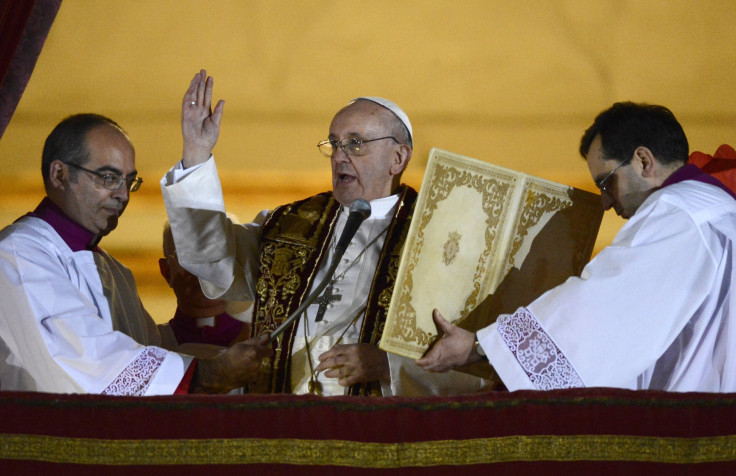New Pope Francis Has Only One Lung, But Can Speak For The Church Just Fine

Pope Francis will speak to millions upon millions of Catholics throughout his upcoming reign, though he only has one lung to draw breath.
The newly elected pontiff lost most of one lung as a teenager, after a nasty bout with a bacterial infection, according to the Associated Press. The initial infection could have been a complication arising from anything from tuberculosis to pneumonia. Doctors removed the organ to stop the infection’s spread – a procedure that likely wouldn’t happen in modern times, thanks to the availability of antibiotics. These days, lung removal is usually saved for extreme cases like cancer.
"He probably wouldn't be able to run marathons, but I don't think that would be on his schedule," Imperial College London respiratory infection expert Peter Openshaw told the AP. "Having one lung should be enough as long as there is no other disease in that lung."
Lung removal doesn’t doom a person to frailty – though it does raise the potential for difficulty in breathing and produce some very unusual X-ray images at the doctor’s office. Pope Francis’s remaining lung likely expanded into the empty space left inside his ribcage, and his diaphragm may have been raised slightly, according to Openshaw. But aside from a slight lack of respiratory reserves, the remaining lung seems to have adequately assumed the primary breathing role throughout most of the pope’s 76 years.
"If he were going to have any major complications from the [lung removal], he would have had them by now," London School of Hygiene and Tropical Medicine lung expert Jennifer Quint told the AP. Though, "I would recommend a yearly flu vaccination and an occasional pneumonia vaccine to avoid infection.”
Unsurprisingly, as an institution that routinely appoints senior citizens to the highest seat of power, the Catholic Church has had to deal with more than its fair share of health concerns in its leaders. The recently resigned Pope Emeritus Benedict XVI had a history of health problems, ranging from strokes to joint pain to gout and cancer.
Benedict’s predecessor, John Paul II, managed his busy schedule of travel and prayer despite suffering from Parkinson’s disease and kidney failure, before dying of heart failure in April 2005.
The 18th-century Pope Clement XIV – who suppressed the Jesuit order that the new pontiff belongs to – suffered from drooling and bulging eyes before his death in 1774. Though officially his death has been attributed to an unspecified illness, though some claimed he was poisoned.
Pope Pius XII died in 1958 from a stroke, though he was also plagued by long bouts of painful hiccups.
While modern popes are usually felled by old age and sickness, the earliest often met more violent ends. The first pope, Saint Peter, is said to have been crucified upside-down. Before the Roman Emperor Constantine ended official Christian persecution in 313, at least 12 popes are thought to have been executed, and others were banished or exiled.
© Copyright IBTimes 2024. All rights reserved.











